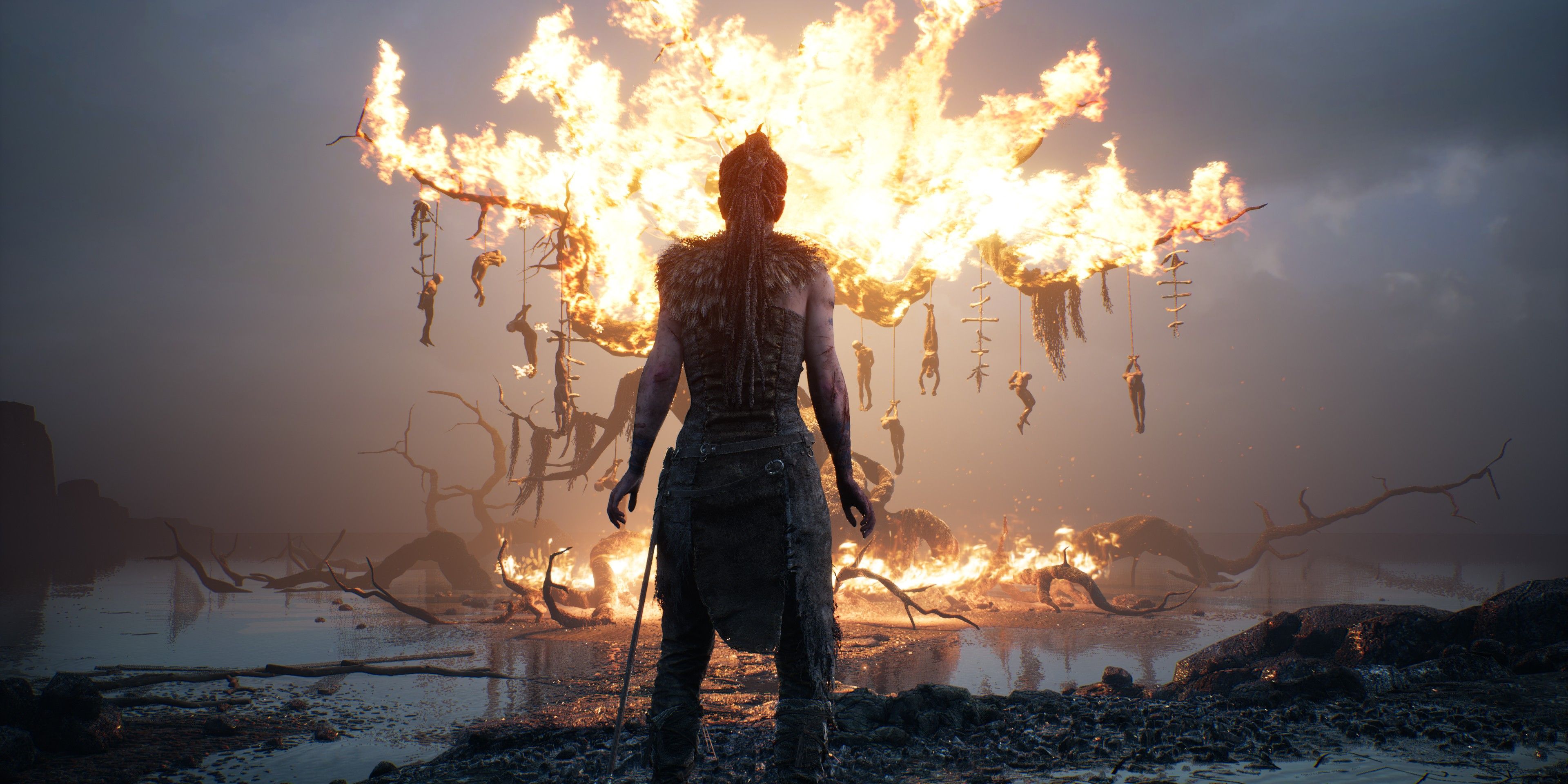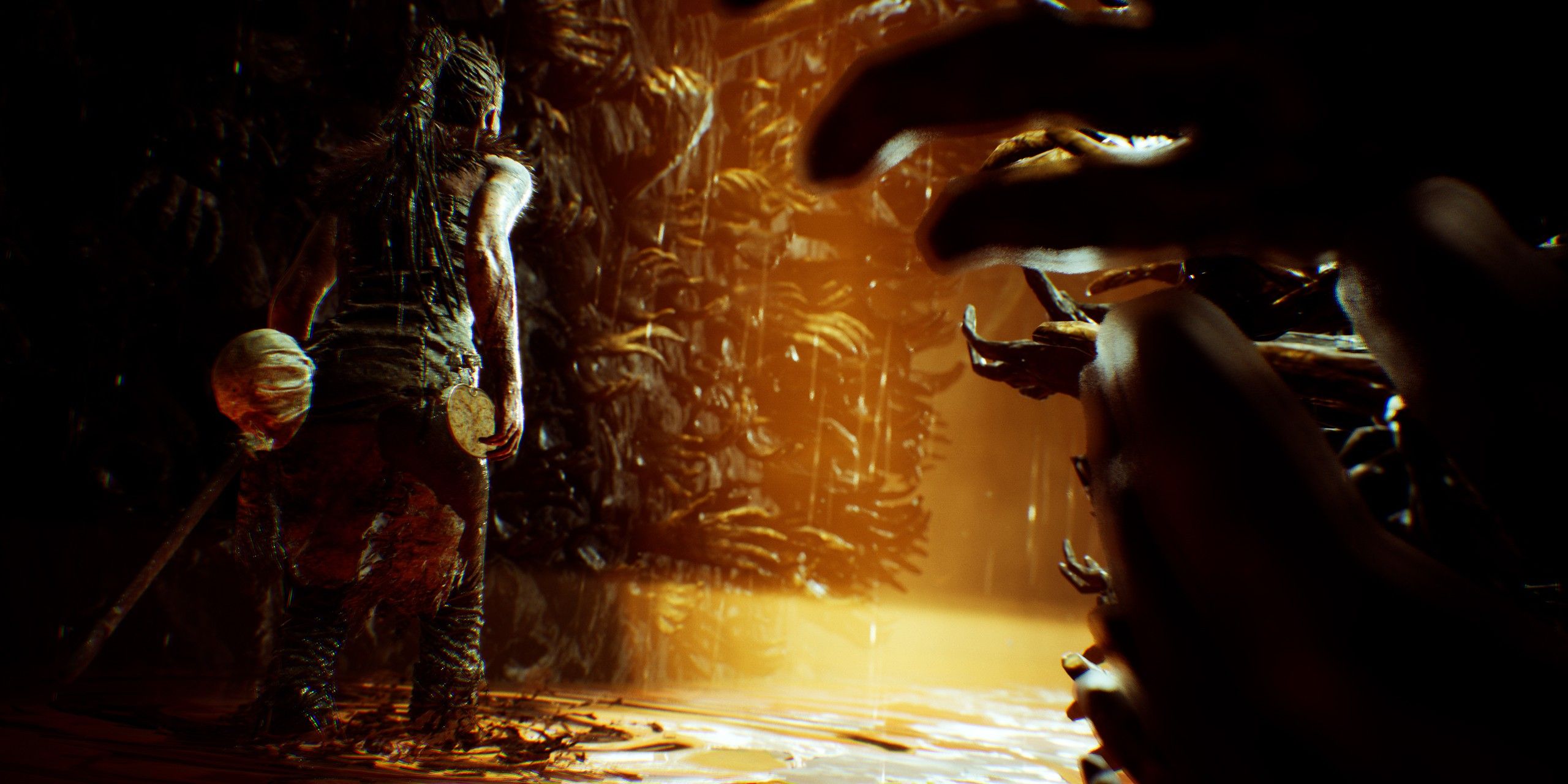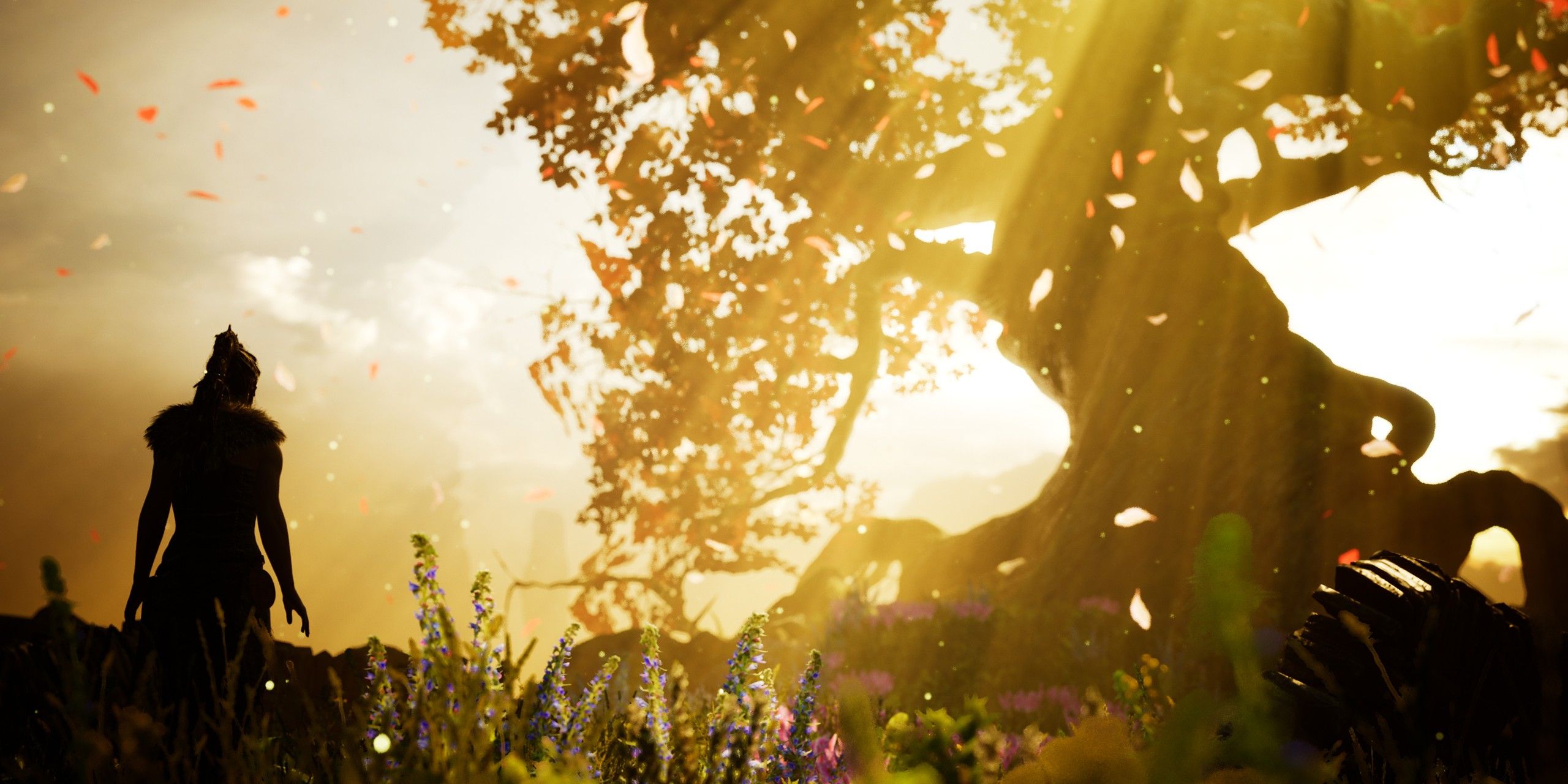Hellblade: Senua's Sacrifice was widely lauded for how it represented mental illness, a trope that is often mishandled by the media. The game is also visually stunning with graphics that have held up over the years. But these successful components have distracted from Hellblade's true juggernaut: its puzzle design.
Released in 2017 by developer Ninja Theory, Hellblade follows Senua's journey into hell as she tries to rescue the soul of her love, Dillion. She is accompanied on her quest by not only the skull of her beloved -- the seat of his soul, necessary to ensure his safety -- but by the darkness of her isolation and a series of voices in her head. It's a dark game that forces players to grapple with psychosis in a compassionate way.
Players responded positively to Hellblade's depiction of mental illness with a fleshed-out, fully three-dimensional, sympathetic character in a genre that often relegates mental illness to two-dimensional villains. Part of this is because Hellblade's design team worked with healthcare workers, mental health professionals and patients to accurately represent what it's like to live with mental illness and to communicate this effectively through the game.
While the majority of this work is done through sound design and visuals, Hellblade also evokes a struggle with perceiving reality with its level design. Puzzles ask players to change their perception of the world through magical gateways and mundane perspective shifts, such as building infrastructure or to finding components to open a lock. The puzzle design is working to supplement other game components to help communicate what it's like inside Senua's mind.
Hellblade's puzzles aren't just good for incorporating the themes and aesthetics of the game; they're also just well-designed puzzles in their own right. Part of what makes them so compelling is the intricate way the game tutorializes the process of solving these puzzles. Early levels introduce different components -- how to change perspective and position in order to see a cohesive whole or how to change the physical components in the world by walking through magical gateways -- and then builds on these individual designs, combining them in subtly more complex and interesting ways.
The game uses similar puzzle designs throughout its different levels, but they never become tiresome. Realizing the mechanics in different ways keeps the puzzles fresh, while building on components that players have already experienced ensures they're solvable.
The puzzles in Hellblade aren't the only moments of great design. The hinting in the game is also top-notch. Lit pathways with broken stairs signal to players where they can travel in unlit versions. The voices in Senua's head clue her in to whether she's traveling in the right direction or even if someone is about to attack her from behind. Using environmental and psychological clues to help the player navigate the environment helps keep the aesthetic cohesion while also just making the player feel knowledgeable.
Not every part of Hellblade is unimpeachable, however. The combat system can be unintuitive, and often players can't figure out the intricacies of timed attacks or powering Senua's focus mechanic until near the end of the game. Fights also seem to build intensity by just adding more enemies to battle, a clunky system at best. Despite these deficiencies, however, the fights in Hellblade are still a wonder to watch unfold and are often integrated into other gameplay mechanics. Slaying a couple of enemies, for example, might be just the trick Senua needs to recreate a futhark rune in blood and allow her to progress through the next door.
While Hellblade: Senua’s Sacrifice deserves all of the praise it's received for its depiction of mental illness, this shouldn't overshadow the game's other design aspects. The puzzles on their own show substantial care for how players approach and learn mechanics, and their implementation in Senua's world only helps to create a cohesive and utterly compelling game.



